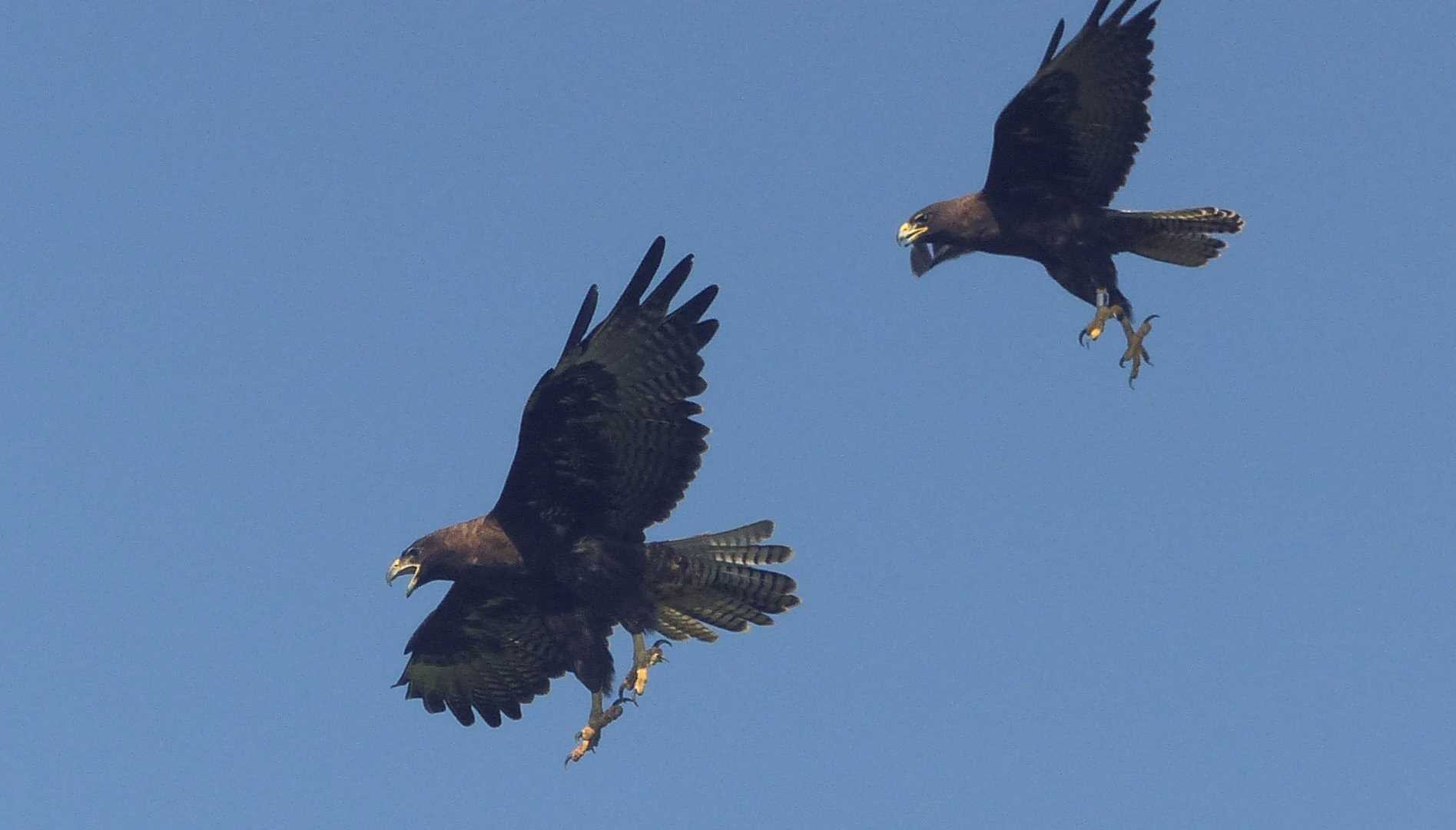I was up before the sun rose over Isabela Island. The National Geographic Endeavour had sailed over the northern coast of the island during the night, and we were now in calm waters, protected between two islands.
Other early-bird guests joined me; coffee mugs in hand, binoculars at the ready, cameras within reach. It was right before breakfast that the whale made an appearance. Brief blows, a long, black back and small dorsal fin. By its erratic swimming pattern, size & behavior, I determined it was most likely a “Bryde’s” whale, or as we prefer to say, a “tropical” whale. Relatively small, about one-third the length of a blue whale, they are the species most commonly seen in these waters. But as I like to say, no-one comes to Galapagos to whale-watch. The sightings are few and far-between, so today was our lucky day!
Our day continued to get better once we were on shore the island of Fernandina. Marine iguanas had lava lizards using their heads as look-outs; the Galapagos racer (snake) was seen multiple times checking out the cracks and crevices for young, newly-hatched marine iguanas; a great blue heron spent long periods of time staring intently down similar fissures, focused also on finding the young reptiles. Two Galapagos hawks flew noisily overhead in a dramatic courtship display; and sea turtles by the dozen were popping their heads up in tidal pools, close in-shore, sharing space with marine iguanas who one-by-one were reaching their optimal body temperatures and entering the water to go foraging for algae.
Out at the point where we had gone to see a flightless cormorant nest, a 3-foot Galapagos snake appeared and wandered freely between and around legs and even over feet and shoes! Such nonchalance in the presence of humans is normal here in the islands, but it still stuns me that the wildlife hasn’t caught onto the fact that we humans are dangerous creatures indeed. We hope they will remain forever in ignorance of that little detail about humans…
The afternoon was spent in northern Isabela Island, off-shore Ecuador Volcano. Large swells were coming in from a long-ago storm down south (a few days ago so we heard); the crashing waves were impressive and somewhat daunting. But intrepid snorkelers gave it a try and found green sea turtles; however the nutrient-rich up-welling waters had limited visibility. All the marine species are probably in great spirits now! Plankton blooms and green water mean many riches for the marine environment of Galapagos. After months of scarcity, food was to be had, and the islands are doing well.
The end of a very special day was spent on the bow in wine-tasting before heading in to recap and another delicious meal.






